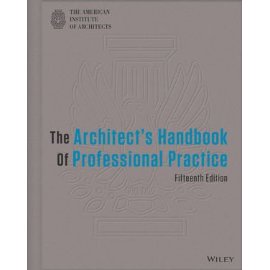Exciting New Community Engagement, Assessment, and Healthy Community Design Resources from the CDC address issues highlighted by AIA’s Decade of Design – Design and Health Initiative
Recently Released/Updated CDC Resources
CDC’s Community Health Status Indicators (CHSI) 2015 is an interactive web application that produces health profiles for all 3,143 counties in the United States. Each profile includes key indicators of health outcomes, which describe the population health status of a county and factors that have the potential to influence health outcomes, such as health care access and quality, health behaviors, social factors (economic and social conditions that may directly or indirectly influence the health of people and communities) and the physical environment (the natural environment (air, water, and soil) and the built environment (safe and affordable housing, transportation, access to nutritious and affordable food.) The social factors and the physical environment are especially important because they represent the conditions in which people are born, live, work, and play. Key features include:
- Summary Comparison Report – an “at a glance” summary of how a county compares with peer counties on the full set of Primary Indicator.
- Indicator Description –info describing the significance of the indicator, source/years of data, methodology for creation, and any limitations.
- Indicator Downloads – indicator values for each group of peer counties can be downloaded for further examination and analysis.
- Populations – allows users to compare an indicator value for the entire population of a county with sub-populations defined by sex, age groups, and race/ethnicity, where data are available. This feature can be used to assist with identifying potential health disparities.
- Census Tract Maps –identify vulnerable populations and potential health disparities by examining the geographic distribution of select social factor indicators within a county (by census tract).
- Associated Indicators – these are indicators that are related to the primary indicator and may provide additional valuable information. For example, the primary indicator for educational attainment is on-time high school graduation rate. Associated Indicators include percent of adults without a high school diploma and percent of adults with an associate level degree or higher.
Working Together: A Training Framework for Public Health and Planning Professionals: As public health professionals and urban planners begin to work more closely, they need the ability to speak each other’s languages in order to work together effectively. Public health professionals and urban planners need a mutual and basic understanding of each other’s concepts, data sources, etc. in order to forge effective partnerships. This toolkit will help both professions get basic training in concepts that will foster this collaboration.
The Built Environment and Public Health Clearinghouse (BEPHC) is a resource for training at both the university and professional levels and a source for relevant news and information at this critical intersection of community design and health. It includes:
- Professional Training directs professionals to webinars, primers, toolkits, organizations, and other online resources for self-directed learning.
- Academic Training offers a full academic semester or individual modules for multidisciplinary instruction between public health and architecture, health impact assessment, planning and transportation engineering. It includes learning goals, units, reading, assignments, sample syllabi, and student reports. It also guides students on academic course offerings, specializations, certificates, and dual degree programs at US colleges and universities for architecture, health impact assessment, planning, and public health.
- A Glossary of over 1,100 terms from architecture, health impact assessment, planning, public health, and transportation engineering.
2014 Bicycling and Walking in the U.S. Benchmarking Report – The Report, a collaboration between CDC and the Alliance for Biking and Walking, includes new data on bicycling and walking in all 50 states, the 52 largest U.S. cities, and a select number of midsized cities. It combines original research with over 20 government data sources to compile data on bicycling and walking levels and demographics, safety, funding, policies, infrastructure, education, public health indicators, and economic impacts.
Coming Later This Year: Transportation & Health Tool – For a long time, public health impacts and benefits were too often overlooked in transportation policy, program and funding decisions. That has begun to change. Many state officials and metropolitan planning organizations (MPOs) have begun including public health goals and health criteria in transportation planning and policies as well as within the transportation project selection process. And the public health community has begun to partner with the transportation sector to integrate health considerations in transportation work. Transportation decision-makers face enormous budget pressure, so investments that pay off in public health can bring additional community benefits. That means understanding all the issues in play, and then determining what is working well and what needs improvement in a world of limited resources. To this end, the Centers for Disease Control and Prevention (CDC) and the S. Department of Transportation (USDOT) are partnering to develop a simple-to-use transportation and health tool (THT).
Key New or Upcoming Partner Resources
The Urban Land Institute just released the Building Healthy Places Toolkit: Strategies for Enhancing Health in the Built Environment. Developers, owners, property managers, designers, investors, and others involved in real estate decision making can use the report’s recommendations and strategies to create places that contribute to healthier people and communities. The toolkit builds on previous publications from the larger Building Healthy Places Initiative, which seeks to leverage the power of ULI’s global network of almost 33,000 members through the Toolkit and other projects like the Healthy Corridors Project designed to provide guidance on transforming isolated, auto-dependent roads and commercial strip centers into vibrant, safe, and healthy corridors.
Healthy Housing Standard – In partnership with the American Public Health Association (with input from two expert committees), the National Center for Healthy Housing (NCHH) developed the National Healthy Housing Standard to inform and deliver housing policy that reflects the latest understanding of the connections between housing conditions and health. The Standard is a living tool for property owners, elected officials, code agency staff, and all who are concerned about housing as a platform for health. The Standard consists of seven chapters with requirements and stretch provisions, a section of definitions, and a section with annotations for each provision that explain the public health rationale and provide references for more information.
AARP is developing a web-based Livability Index, to be released in mid- to late April, which will use nationally available data, incorporate mapping technology, quantitative measures, and public policies to assess the livability of communities. The Index will help users better understand their communities and make decisions about their future needs – informing policy development and community stakeholder participation. A community’s Livability Score will be based on measures of essential attributes in certain categories, also called domains, to determine the location’s degree of livability. Domains will include: 1) Environment, 2) Health, 3) Housing, 4) Neighborhood, 5) Transportation, 6) Civic & Social Engagement, and 7) Economic Opportunity. To receive launch notification sign up here: http://www.aarp.org/livable-communities/livable-community-news-alerts/.
Minimum Elements and Practice Standards for Health Impact Assessment (Version 3): This document represents a revision of the Minimum Elements and Practice Standards for Health Impact Assessment, originally published by the North American HIA Practice Standards Working Group in April 2009 and revised in November, 2010. This document is intended to provide guidance on what is required for a study to be considered an HIA (Minimum Elements) and some benchmarks for effective practice. These Minimum Elements apply to HIA whether conducted independently or integrated within an environmental, social or strategic impact assessment. The Standards can serve HIA practitioners as well as those who request, fund, and evaluate HIA practice.
Existing Tools in Community Engagement and Assessment from CDC
Principles of Community Engagement – Provides public health professionals, health care providers, researchers, and community-based leaders and organizations with both a science base and practical guidance for engaging partners in projects that may affect them. The primer also provides tools for those who are leading efforts to improve population health through community engagement.
Protocol for Assessing Community Excellence in Environmental Health (PACE EH) – PACE EH guides local public health officials and communities through a process to explore the broad physical and social environments that impact health and safety. The assessment process engages communities in a series of tasks to investigate the relationships among what they value, how their local environment impacts their health, and what actions are necessary to live safer and healthier lives.










